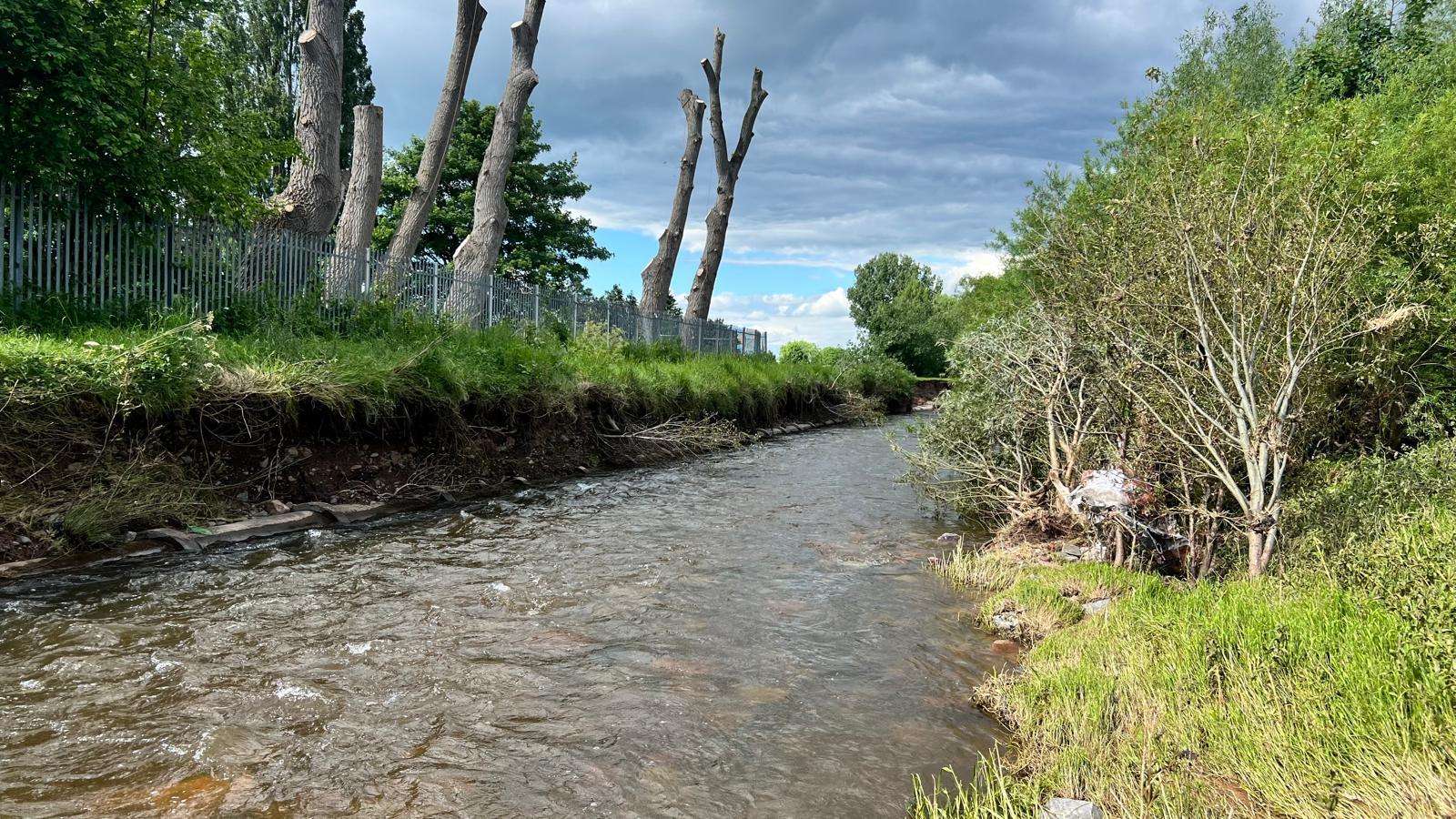
In September 2024, working on behalf of Cain Bio and in close collaboration with United Utilities and Cumberland County Council, we successfully delivered a highly sensitive in-river restoration project in Melbourne Park, Carlisle. The project focused on stabilising a severely eroded section of the River Petteril, with the initial scope of 200m expanding to approximately 250m as works progressed.
The intervention incorporated both traditional and green engineering techniques, including the strategic placement of over 6,000 tonnes of natural stone alongside softer bioengineering features such as live willow, planted coir rolls, and natural geotextiles, designed to enhance biodiversity and improve bank stability.
Key Activities
Enabling Works
Erection of temporary security fencing.
Installation of stabilised ground protection matting.
Establishment of temporary site compounds, including hardstanding areas.
Tree Works & Vegetation Clearance
Selective clearance to allow safe construction access and to harvest willow material for use in bank restoration.
River Channel Realignment
Widening of the river by removing accumulated sediment berms on the eastern bank to restore the historic alignment of the channel.
Bank Stabilisation (Western Bank)
Installation of rock rip-rap and green measures along the left-hand (west) bank to halt ongoing erosion.
Utility Repairs
Repairs to cracked pipe collars at a small number of joints, safeguarding critical infrastructure.
Temporary Fencing
Erection of temporary fencing on the western bank to protect areas during vegetation regrowth.
Site Reinstatement
Landscaping and replanting throughout affected areas within Melbourne Park to return the site to a naturalised condition.
Permanent Bank Repair Features
140m of rock rip-rap installed along the west bank to reinstate eroded area
20m of upstream rip-rap tied into an existing United Utilities CSO structure
120m of downstream toe protection to prevent future undercutting and tie into existing defences.
Ecological enhancements integrated with the rip-rap, including:
Large woody material
Live willow planting
Coir rolls
Natural geotextiles
250m of reprofiling on the east bank to return the river to its historic, natural alignment.
This project demonstrates a balanced approach to river engineering—combining robust civil engineering techniques with nature-based solutions to deliver a sustainable, resilient outcome for both the environment and local infrastructure.

Get In Touch - 07730 482998.